Categories
Left column house ads
Best of New Tribeca: The Winners
December 29, 2016 Fitness / Spas / Salons, Restaurant/Bar News, Services, Shopping
The polls are closed, the results have been tabulated, and—thanks to the everyone who voted—the rejoicing can begin. Tribeca Citizen readers’ choices for Best of New Tribeca 2016 are below. And thanks for the feedback in the open-ended question!
★★★★★
Favorite new restaurant/bar: TWO HANDS
Runners-up (in order): City Vineyard, Maman, Augustine, Amada, Il Mattone.
Favorite new shop: TARGET
Runners-up: Best Market, Bluemercury, Rag & Bone, Pearl River Mart, Aesop.
Favorite new service: FOURTEENJAY SALON
Runners-up: Heyday and Pure Barre (tie), Trinity Boxing Club, Skin Laundry, Yoga Vida. (Photo courtesy Elle Macpherson. And I’m not allowing comments about her fur coat because I used her photo without asking, so it would be especially ungracious to let people insult her.)
Biggest restaurant/bar bummer: CITY HALL
Runners-up: Almond, Raccoon Lodge, Cercle Rouge, Mangez Avec Moi and White Street (tie).
Biggest shop/service bummer: GOTHAM BIKES
Runners-up: Shoofly, American Apparel, Color Me Mine, Pookie & Sebastian, Christina Lehr and P.S. Fabrics (tie).
22 Comments
Subscribe
Subscribe to the TC Newsletter







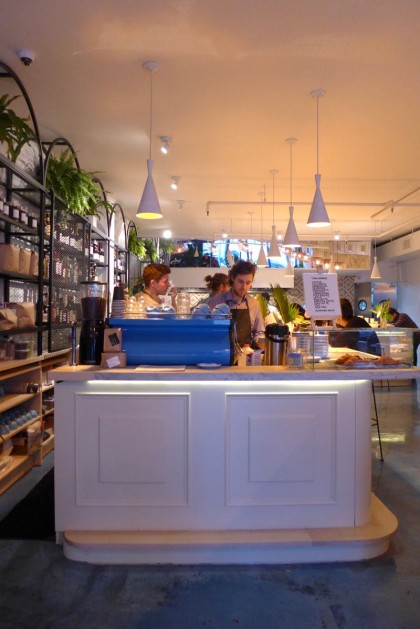
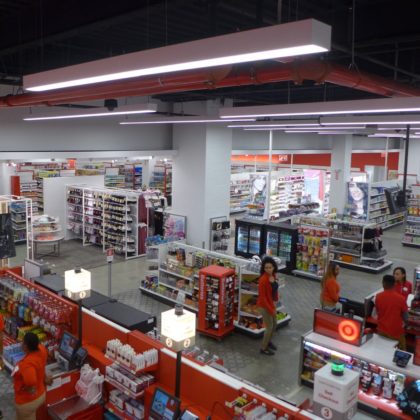
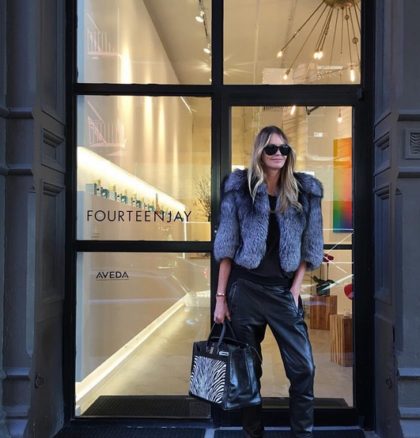
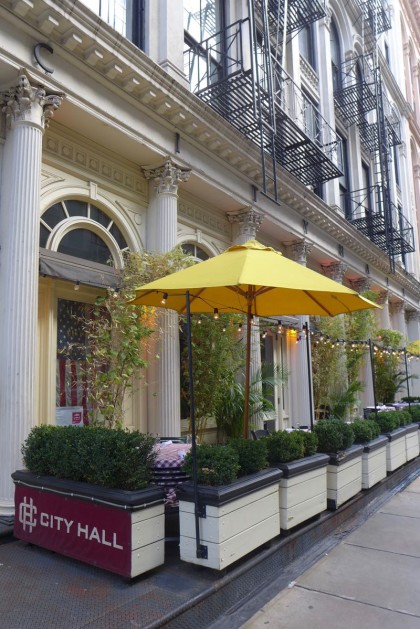
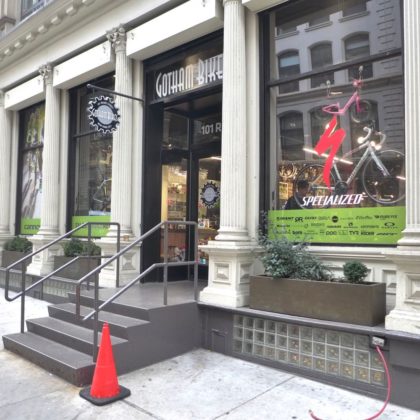






I supposeTarget being voted the new favorite shop by the readers accurately depicts the residents of “new Tribeca” and the suburbanization of our city… quite sad. Thanks for all the hard work you do with this site Erik
Agreed. For all the talk I hear about supporting the small, neighborhood retailer, it’s very revealing that Target tops the list. I’m happy to say I’ve never been in the new Target and have no plans to go.
To be fair, you couldn’t not answer any of the question s and complete the survey. Next year a “none of the above” option would be nice. I chose Target because I had visited only it and Best Market (which I loathe). I don’t think overpriced chain denim or beauty products are more in keeping with the spirit of Olde Tribeca than cheap paper towels and dish soap.
Yes, it would be great if next year’s survey did not require answers to all the questions. I had never been to any of the places in a couple of categories and thus couldn’t participate in the survey at all.
Also it would be telling to do a survey of old Tribeca vs new Tribeca among Target customers…….Just kidding, but enough already about the undesirable new Tribecans!
Two Hands, for us, was an unsettling experience. It seems like their dishwashing facilities and the kitchen are located downstairs and so they’re making their staff navigate the dining space and stairs loaded with heavy dishes. That’s mean, so we don’t go back.
This is pretty normal for NYC to have kitchens in basements. You may not usually see this as staircases are usually behind doors, but I would not consider it mean or unsettling. Did the wait staff imply it was cruel to them?
The dishwasher station is now located upstairs so this issue does not happen anymore.
its obvious why Target is the new favorite shop. What Mom and Pop small store can really survive the vicious rent hikes from the landlords in the city? Not one! only big chains can. Look around people at the empty store front in Tribeca especially Greenwich Street. Empty for years. Look around the city , small stores ( mom & pop ) can not survive. Look what a sell out this city really is, and the rents!! Please all our favorites in the neighborhood are going, and if your not “rich” we are gone too.
The reality is there are few empty storefronts left in Tribeca. . And some that are vacant now will be opening as new businesses soon. I think one should also consider that most of the Target store is basement space. And it is in a building and in a location that would probably not be suitable for a mom and pop small business.
For the record, there are a lot of vacant storefronts in Tribeca—125 when I counted in August (link below), up from 100 the year before. Some will no doubt be home to new businesses soon, but others that are currently occupied will likely become vacant. Regardless, it’s undeniable that independent businesses struggle mightily in this neighborhood, where rents are high because of the richness of the residents, but density is still rather low compared to the rest of Manhattan. And a big-box store like Target is a tough competitor, as are the online services (Amazon, Fresh Direct, Soap, Woof, and so on) that don’t have to pay storefront rent.
https://tribecacitizen.wpengine.com/2016/08/22/ghost-town-the-growing-number-of-vacant-storefronts-in-tribeca/
It’s not just ‘rents are high’. That is a factor and I have seen many good retailers close shop due to high increases in renewals, but the other factor is that traditional brick and mortar stores are losing more and more business to the internet every year.
Quick example. How many holiday presents did you buy on the internet this year? 20 years ago this didn’t exist. I know a lot of retailers don’t get the foot traffic they used to and this has nothing to do with rent.
If you look at the new storefronts, more and more are food, yoga, and other experience based. The idea of just being a place to shop for simple goods is not as easy as it used to be.
Is this foreign ownership theory quantifiable? The economic situation just doesn’t seem to warrant the proliferation of the “luxury” building downtown. Can’t an incentive be created to build residences that local workers can afford to live in? Why not disincentivize direct foreign investment. Let them buy REITS is they want to invest.
This is not a scientific study but based on the high-rise building I live in, virtually all of the apartments owned by offshore owners are being rented out, and have been for years. Just because a condo may have been purchased by a foreign buyer doesn’t mean that the apartment is unoccupied.
http://therealdeal.com/2016/10/26/the-long-view-nyc-is-yet-to-tax-foreign-buyers-but-could-that-soon-change/
“Since 2012, several cities with a heavy influx of foreign – and especially Chinese – apartment buyers followed Hong Kong’s model [a 15-percent tax on property purchases by anyone who wasn’t a permanent resident]. Singapore imposed a 15-percent tax on foreign apartment buyers in 2013. That same year, Switzerland set a 20-percent cap on the number of pieds-à-terre in any community. This April, Britain introduced a ‘stamp tax’ on pieds-à-terre. In June, the Australian states of Queensland and New South Wales (which include Sydney, Brisbane and the Gold Coast) introduced 3- and 4-percent taxes on foreign homebuyers. And in August, Vancouver set a 15-percent tax on foreign property buyers.
“One glaring exception to this trend is New York. What’s up with that?
[…]
“[I]n a market as large as New York’s, foreign buyers may not move the needle on prices as much as they might in other markets.
“‘Our foreign investment is fairly well below 15 percent (of apartment sales) as a whole,’ said Edward Mermelstein, a real estate attorney who works with overseas real estate investors. ‘We’re not as affected by foreign investment driving the prices up.’
“Anti-discrimination laws prevent brokers and city agencies from collecting data on the share of foreign apartment buyers, meaning no one knows for sure how many there are. But it’s clear prices in New York haven’t risen as dramatically as in some other cities. In Hong Kong, prices rose 65 percent in two years. In Vancouver, prices rose 31 percent in the first eight months of 2016 alone. In Manhattan, meanwhile, the average apartment price rose by a more modest 13 percent over the past year, according to Douglas Elliman, and the market shows signs of slowing down. Slower price growth may mean even less political pressure to curb foreign buyers.
[…]
“As other cities impose taxes on foreign buyers, more of them may choose New York, putting upward pressure on prices. That could in turn increase political pressure to limit the influx of overseas money.”
I cannot imagine what put the loss of City Hall at the top of the “bummers” list. The chef/owner was contemptuous of this neighborhood, tried to screw the tenants of his building mercilessly, the clientele of the restaurant, as far as I could tell, comprised mostly people from outside the neighborhood, and the food never got a review in my recollection that put it above the mediocre level. I have to assume I’m missing something, somewhere.
I must agree that though I love Tribeca Citizen, the survey doesn’t really yield very relevant or useful conclusions. Nevertheless, I’m always grateful for the effort!
I was initially very against the Target, but I find myself shopping for stuff there relatively frequently. I was most concerned about increased foot traffic, but have not seen any real difference. I mostly by things like Quaker Oatmeal and cleaning supplies there. To be honest, it is taking more business from Amazon than from any local mom and pop – at least for my family.
And as for the 125 empty storefronts – how many total storefronts are there in tribeca. I think the vacancy rate relative to other neighborhoods or cities would be a more telling statistic than the number of vacancies.
About Target, agreed. Target’s clearly filling a previously unmet need of the local market.
About the number of empty storefronts, you are spot on. Erik do you have an empty-storefront-to-total-strorefronts stat?
Nope, and there’s no way I’m walking around counting them.
Based on the empty storefront survey and online data on retail goods and services locations from sources like citymaps.com, I would estimate 15-20% retail vacancy in Tribeca, which is probably less than Soho and Meatpacking, but more than Lower Manhattain, Upper West Side, and Flatiron.
Comparison Data From: Retail Q3 2016 MARKETBEAT by Cushman & Wakefield
AVAILABILITY RATE BY SUBMARKET
29.3% Fifth Avenue (42nd-49th Streets)
23.4% Meatpacking
22.4% Herald Square/West 34th Street
22.2% Times Square
21.6% SoHo
21.2% Madison Avenue
15.9% Fifth Avenue (49th-60th Streets)
13.1% Third Avenue
11.3% Upper Westside
10.2% Lower Manhattan
9.6% Flatiron
http://www.cushmanwakefield.com/~/media/marketbeat/2016/10/Manhattan_Americas_MarketBeat_Retail_Q32016.pdf
Thank for posting, very interesting. Facts matter. :-)
No matter the stat…the feel of empty storefronts is so much larger in tribeca- it is a human scale perspective. You cannot compare using lower Manhattan as the marker because that probably includes BPC & WTC…it would be a great study subject for urbanites in a micro level of neighborhoods…Tribeca vs. West Village vs. Soho…Soho is more big chains and more commercial each year…just like Tribeca..